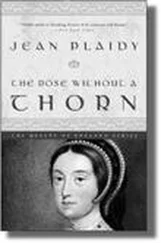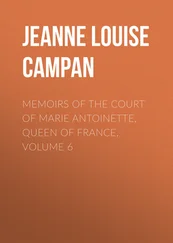Henry Bell - Life of Mary Queen of Scots, Volume 1 (of 2)
Здесь есть возможность читать онлайн «Henry Bell - Life of Mary Queen of Scots, Volume 1 (of 2)» — ознакомительный отрывок электронной книги совершенно бесплатно, а после прочтения отрывка купить полную версию. В некоторых случаях можно слушать аудио, скачать через торрент в формате fb2 и присутствует краткое содержание. Жанр: foreign_antique, foreign_prose, на английском языке. Описание произведения, (предисловие) а так же отзывы посетителей доступны на портале библиотеки ЛибКат.
- Название:Life of Mary Queen of Scots, Volume 1 (of 2)
- Автор:
- Жанр:
- Год:неизвестен
- ISBN:нет данных
- Рейтинг книги:5 / 5. Голосов: 1
-
Избранное:Добавить в избранное
- Отзывы:
-
Ваша оценка:
- 100
- 1
- 2
- 3
- 4
- 5
Life of Mary Queen of Scots, Volume 1 (of 2): краткое содержание, описание и аннотация
Предлагаем к чтению аннотацию, описание, краткое содержание или предисловие (зависит от того, что написал сам автор книги «Life of Mary Queen of Scots, Volume 1 (of 2)»). Если вы не нашли необходимую информацию о книге — напишите в комментариях, мы постараемся отыскать её.
Life of Mary Queen of Scots, Volume 1 (of 2) — читать онлайн ознакомительный отрывок
Ниже представлен текст книги, разбитый по страницам. Система сохранения места последней прочитанной страницы, позволяет с удобством читать онлайн бесплатно книгу «Life of Mary Queen of Scots, Volume 1 (of 2)», без необходимости каждый раз заново искать на чём Вы остановились. Поставьте закладку, и сможете в любой момент перейти на страницу, на которой закончили чтение.
Интервал:
Закладка:
There was a chapel in the neighbourhood of Musselburgh, dedicated to the Lady of Loretto, which, from the character of superior sanctity it had acquired, had long been the favourite resort of religious devotees. In this chapel, a body of the Catholic priests undertook to put their religion to the test, by performing a miracle. They fixed upon a young man, who was well known as a common blind beggar, in the streets of Edinburgh, and engaged to restore to him, in the presence of the assembled people, the perfect use of his eyesight. A day was named, on which they calculated they might depend on this wonderful interposition of divine power in their behalf. From motives of curiosity, a great crowd was attracted at the appointed time to the chapel. The blind man made his appearance on a scaffold, erected for the occasion. The priests approached the altar, and, after praying very devoutly, and performing other religious ceremonies, he who had previously been stone blind, opened his eyes, and declared he saw all things plainly. Having humbly and gratefully thanked his benefactors, the priests, he was permitted to mingle among the astonished people, and receive their charity.
Unfortunately, however, for the success of this deception, a gentleman from Fife, of the name of Colville, determined to penetrate, if possible, a little further into the mystery. He prevailed upon the subject of the recent experiment to accompany him to his lodgings in Edinburgh. As soon as they were alone, he locked the chamber-door, and either by bribes or threats, contrived to win from him the whole secret. It turned out, that in his boyhood, this tool, in the hands of the designing, had been employed as a herd by the nuns of the Convent of Sciennes, then in the neighbourhood of Edinburgh. It was remarked by the sisterhood, that he had an extraordinary facility in “flyping up the lid of his eyes, and casting up the white.” Some of the neighbouring priests, hearing accidentally of this talent, imagined that it might be applied to good account. They accordingly took him from Sciennes to the monastery near Musselburgh, where they kept him till he had made himself an adept in this mode of counterfeiting blindness, and till his personal appearance was so much changed, that the few who had been acquainted with him before, would not be able to recognise him. They then sent him into Edinburgh to beg publicly, and make himself familiarly known to the inhabitants, as a common blind mendicant. So far every thing had gone smoothly, and the scene at the Chapel of Loretto might have had effect on the minds of the vulgar, had Colville’s activity not discovered the gross imposture. Colville, who belonged to the Congregation, instantly took the most effectual means to make known the deceit. He insisted upon the blind man’s appearing with him next day, at the Cross of Edinburgh, where the latter repeated all he had previously told Colville, and confessed the iniquity of his own conduct, as well as that of the priests. To shelter him from their revenge, Colville immediately afterwards carried him off to Fife; and the story, with all its details, being speedily disseminated, exposed the Catholic clergy to more contempt than ever. 9 9 M’Crie’s Life of Knox, Vol. 1. p. 323.
CHAPTER III.
MARY’S BIRTH, AND SUBSEQUENT RESIDENCE AT THE FRENCH COURT, WITH A SKETCH OF THE STATE OF SOCIETY AND MANNERS IN FRANCE, DURING THE SIXTEENTH CENTURY
Mary Stuart, Queen of Scots, was the third child of James V. and his wife, Mary of Guise. That lady had born him previously two sons, both of whom died in infancy. Mary came into the world on the 7th of December 1542, in the Palace of Linlithgow. 10 10 By the kindness of Mr Brown of Glasgow, the ingenious delineator of the Royal Palaces of Scotland, we are enabled to give, as the vignette to the present Volume, a view of this Palace, exhibiting the window of the very room where Mary was born, which is the large window on the first floor, immediately under the flight of birds.
She was only seven days old when she lost her father, who at the time of her birth lay sick in the Palace of Falkland. James died, as he had lived, with a kingly and gallant spirit. In the language of Pitscottie, he turned him upon his back, and looked and beheld all his nobles and lords about him, and, giving a little smile of laughter, kissed his hand, and offered it to them. When they had pressed it to their lips for the last time, he tossed up his arms, and yielded his spirit to God. James was considered one of the most handsome men of his day. He was above the middle stature; his hair flowed luxuriantly over his shoulders in natural ringlets, and was of a dark yellow or auburn colour; his eyes were gray, and very penetrating; his voice was sweet toned; and the general expression of his countenance uncommonly prepossessing. He inherited a vigorous constitution, and kept it sound and healthy by constant exercise, and by refraining from all excesses in eating or drinking. He was buried in the Royal Vault in the Chapel of Holyrood House, where his embalmed body, in a state of entire preservation, was still to be seen in the time of the historian Keith.
The young Queen was crowned by Cardinal Beaton at Stirling, on the 9th of September 1543. Her mother, who watched over her with the most careful anxiety, had been told a report prevailed that the infant was sickly, and not likely to live. To disprove this calumny, she desired Janet Sinclair, Mary’s nurse, to unswaddle her in the presence of the English Ambassador, who wrote to his own court that she was as goodly a child as he had seen of her age.
Soon after her birth, the Parliament nominated Commissioners, to whom they intrusted the charge of the Queen’s person, leaving all her other interests to the care of her mother. The two first years of her life, Mary spent at Linlithgow, where it appears she had the small-pox, a point of some importance, as one of her historians remarks, in the biography of a beauty and a queen. 11 11 Sadler’s State Papers and Letters, vol. i. p. 263.
The disease must have been of a particularly gentle kind, having left behind no visible traces. During the greater part of the years 1545, 46 and 47, she resided at Stirling Castle, in the keeping of Lords Erskine and Livingstone. Here she received the first rudiments of education from two ecclesiastics, who were appointed her preceptors, more, however, as matter of form, than from any use they could be of to her at so early an age. When the internal disturbances of the country rendered even Stirling Castle a somewhat dangerous residence, Mary was removed to Inchmahome, a sequestered island in the Lake of Monteith. That she might not be too lonely, and that a spirit of generous emulation might present her with an additional motive for the prosecution of her studies, the Queen Dowager selected four young ladies of rank as her companions and playmates. They were each about her daughter’s age, and either from chance, or because the conceit seemed natural, they all bore the same surname. The four Maries were, Mary Beaton, a niece of Cardinal Beaton, Mary Fleming, daughter of Lord Fleming, Mary Livingstone, whose father was one of the young Queen’s guardians, and Mary Seaton, daughter of Lord Seaton.
Mary having remained upwards of two years in this island, those who had, at the time, the disposal of her future destiny, thought it expedient, for reasons which have been already explained, that she should be removed to France. She was accordingly, in the fifth year of her age, taken to Dumbarton, where she was delivered to the French Admiral, whose vessels were waiting to receive her, and attended by the Lords Erskine and Livingstone, her three natural brothers, and her four Maries, she left Scotland.
The thirteen happiest years of Mary’s life were spent in France. Towards the end of July 1548, she sailed from Dumbarton, and, after a tempestuous voyage, landed at Brest on the 14th of August. She was there received, by Henry II.’s orders, with all the honours due to her rank and royal destiny. She travelled, with her retinue, by easy stages, to the palace at St Germain En Laye; and to mark the respect that was paid to her, the prison-gates of every town she came to were thrown open, and the prisoners set free. Shortly after her arrival, she was sent, along with the King’s own daughters, to one of the first convents in France, where young ladies of distinction were instructed in the elementary branches of education.
Читать дальшеИнтервал:
Закладка:
Похожие книги на «Life of Mary Queen of Scots, Volume 1 (of 2)»
Представляем Вашему вниманию похожие книги на «Life of Mary Queen of Scots, Volume 1 (of 2)» списком для выбора. Мы отобрали схожую по названию и смыслу литературу в надежде предоставить читателям больше вариантов отыскать новые, интересные, ещё непрочитанные произведения.
Обсуждение, отзывы о книге «Life of Mary Queen of Scots, Volume 1 (of 2)» и просто собственные мнения читателей. Оставьте ваши комментарии, напишите, что Вы думаете о произведении, его смысле или главных героях. Укажите что конкретно понравилось, а что нет, и почему Вы так считаете.












